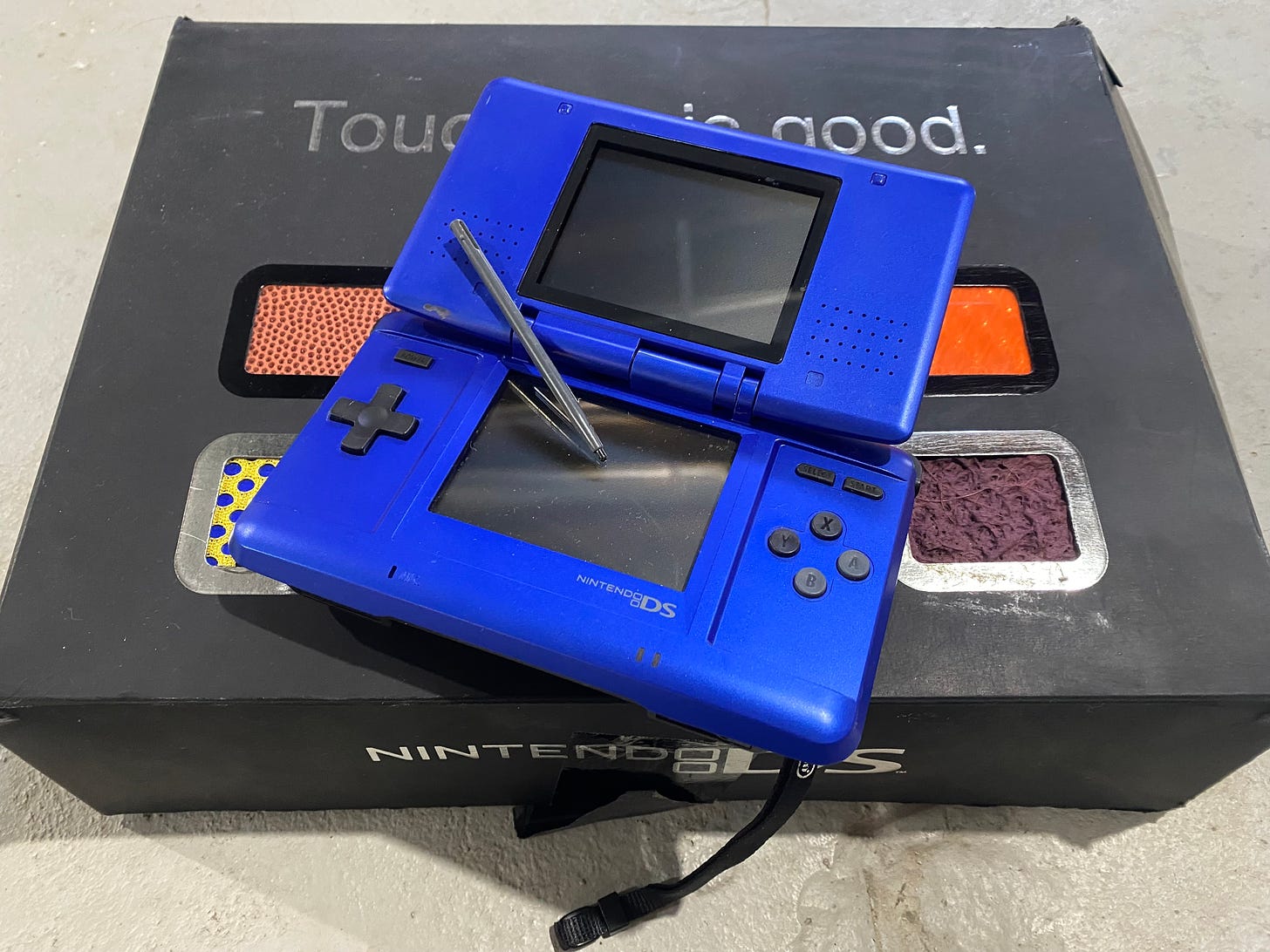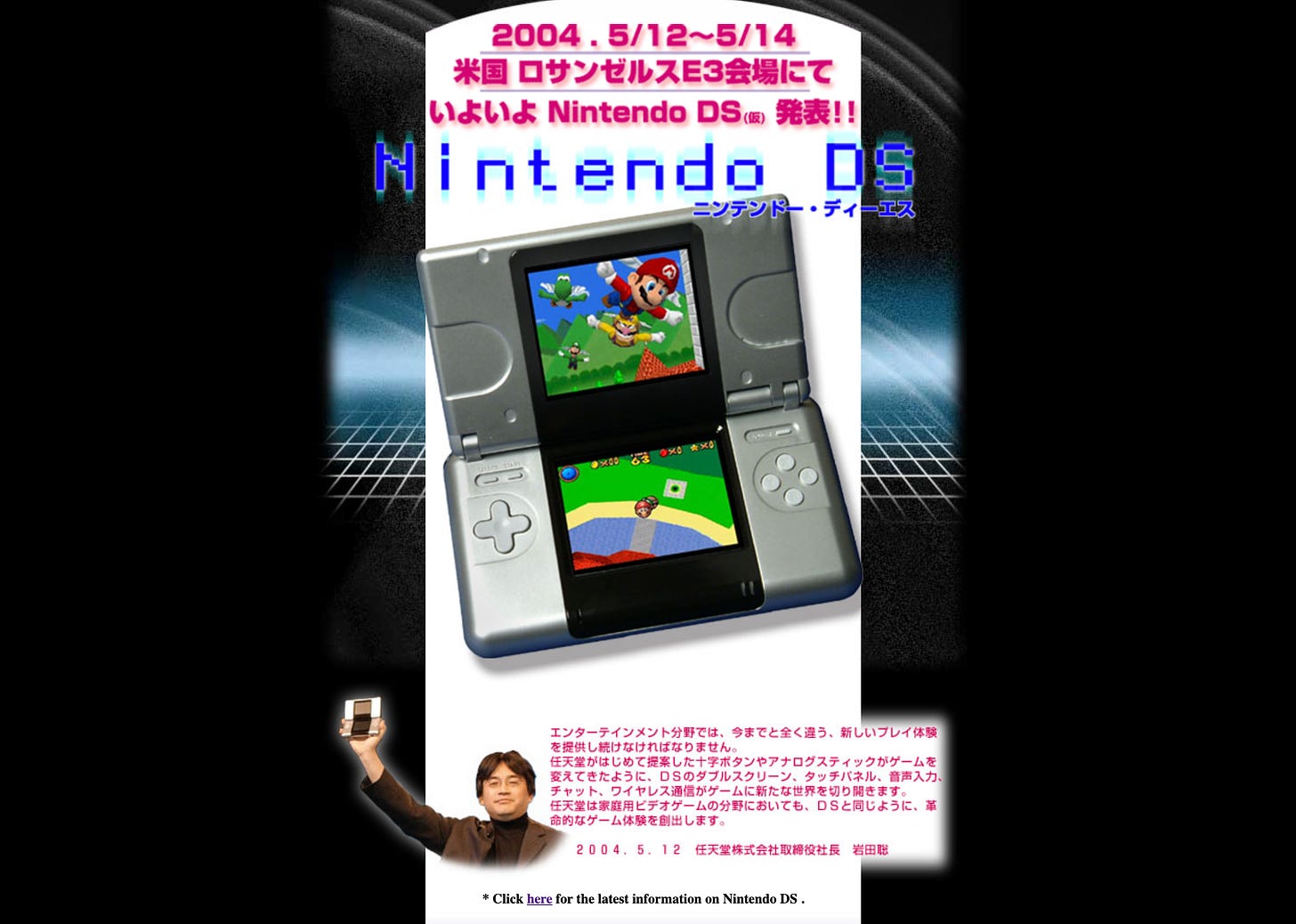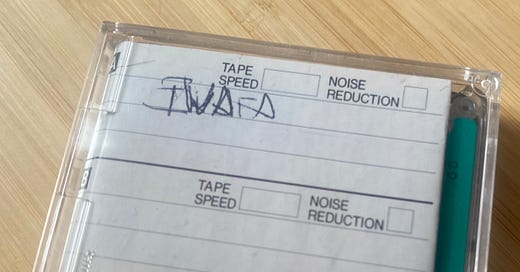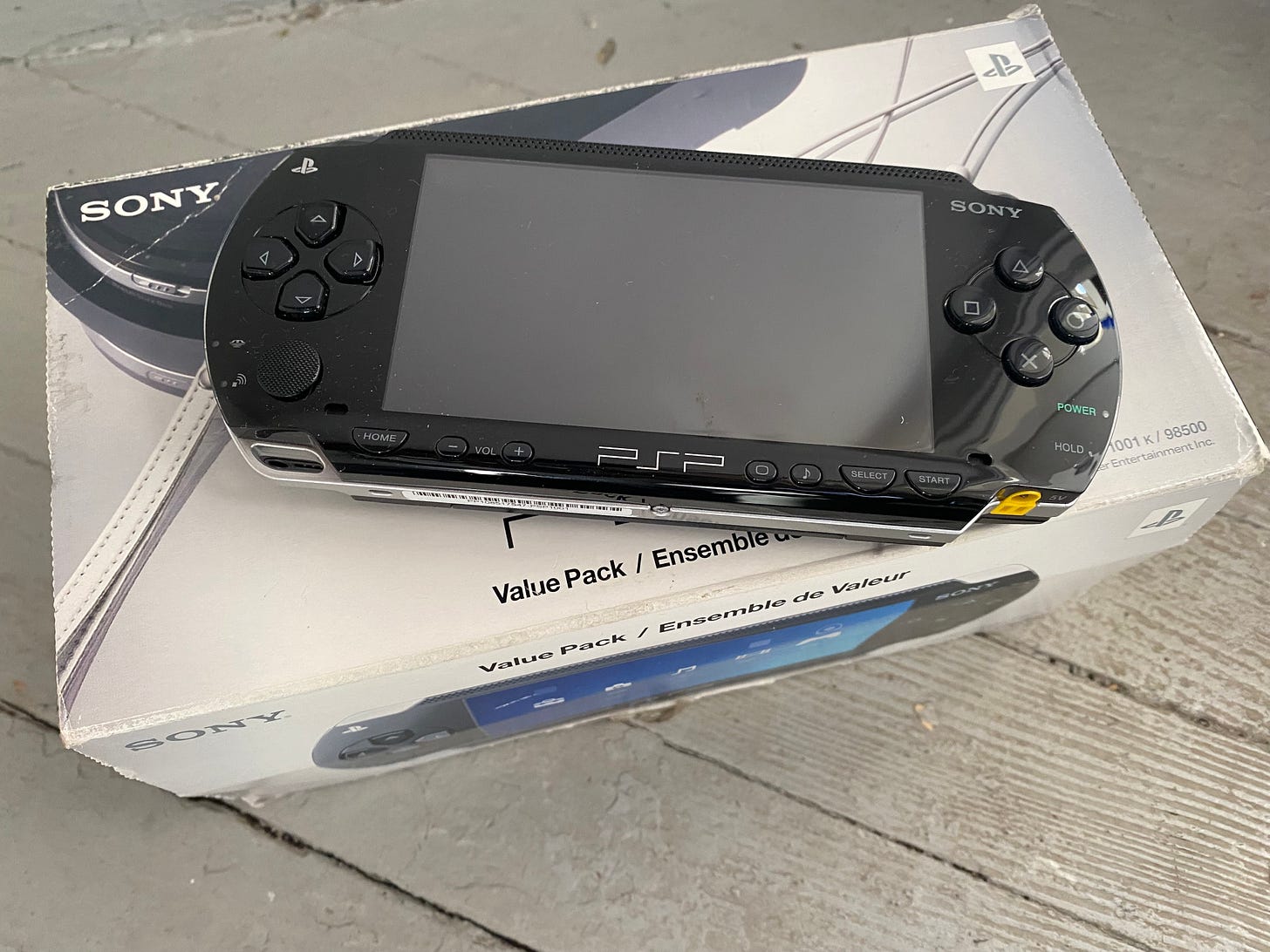What Nintendo’s late president Satoru Iwata told me, a long time ago
Words and some audio (if you’re reading this online) from an old interview tape
Several years ago, while digging through a box of old reporting files, I found a micro-cassette tape labeled “Iwata.” I’ve wondered for years what is on it.
I figured it was a recording of one of the interviews I had conducted with the late Satoru Iwata, the revered game-developer-turned-Nintendo-president, who died in 2015.
But I couldn’t find my old tape machine.
Was the tape a record of the chat we had in 2012, when I flew cross-country just to talk to him about New Super Mario Bros. 2? The interview when I successfully implored his reps to reward my effort with more than the 30 minutes of allotted interview time, which gave us a moment to discuss his refreshingly hopeful vision for a Nintendo gaming social network? (During that chat, he had also confirmed to me that Mario does not have a last name.)
Was it our 2006 video interview for MTV, that was aired on GameTrailers and has thankfully been preserved on YouTube?
Maybe it was our first one, from 2004, when I, a young reporter of 27, miscalculated the time it would take me to walk to our meeting spot at a Los Angeles hotel. I had to hustle and arrived so horrifyingly drenched in sweat that his handlers asked if I wanted to delay the interview a few minutes so I could stop dripping everywhere.
Back in 2020, I Googled how long a recording on a micro cassette tape could last. I learned that they could start decaying in 15 years.
In 2022, no longer wanting to tempt fate, I bought a micro cassette recorder off eBay.
It didn’t work
I bought another and popped the “Iwata” tape in. It was the 2004 chat…

I finally listened to the whole interview this week.
The tape is crackly, and the live translation is not the best. Mr. Iwata, then two years into his tenure as Nintendo’s president, listens to my questions in English, answers in Japanese and then waits as his comments are translated for me.
The topic is the Nintendo DS, a then-upcoming Nintendo handheld that proved one of gaming’s biggest successes but at the time seemed like a potentially disastrous idea. Could it even be the end of Nintendo?
I want to share parts of the Iwata interview with you. But I need to first give you some set-up about the Nintendo that Iwata inherited and the jeopardy the company appeared to be in when he and I spoke.
Nintendo’s big problem at the time, or so I and many other reporters, pundits and industry figures thought, was Sony. Nintendo, the company that had saved the home console industry from the Atari crash of the early 80s with the introduction of the Nintendo Entertainment System, had then won a multi-generational dog-fight with Sega. But an attempted partnership with electronics maker Sony curdled, and Sony entered the console business with 1994/1995’s PlayStation, which would crush 1996’s Nintendo 64, 102 million units sold lifetime vs. 33 million.
It didn’t matter that Nintendo supported the N64 with instant-classic games such as Super Mario 64 or The Legend of Zelda: The Ocarina of Time. The N64 was late, and its games ran on cartridges, which were much more expensive for outside developers to work with than the PlayStation’s CDs. (PlayStation games were often cheaper for the public, too.) The best illustration of publisher frustration with Nintendo at the time: Square Enix, the makers of the Final Fantasy series, had moved the franchise from Nintendo platforms to PlayStation and then ran a magazine ad for Final Fantasy VII which stated: “Someone please get the guys who make cartridge games a cigarette and a blindfold.”
By 2003, Nintendo’s N64 successor, the GameCube, was struggling, too. Nintendo had followed the conventional wisdom and switched to a disc-based system, but things were going even worse. That console wound up selling just 22 million units. In the midst of the GameCube doldrums Nintendo management spent part of E3 2003 promoting a multiplayer Pac-Man game as their next big thing and were so eager to distance themselves from popular PlayStation-based gaming trends like the surging and notoriously violent Grand Theft Auto that they promised that “Mario will never start shooting hookers.”
(Note: History shows that at least one expert writing for IGN in 2003 thought the Pac-Man Vs. game was cool, but what did he know?)
In 2003, Nintendo was at least still dominant in portable gaming thanks to the thriving Game Boy (120 million units sold lifetime) and its 2001 successor, Game Boy Advance (82 million units),
But during E3 that year, Sony said it was going to make a handheld PlayStation, a PlayStation Portable. It would be a disc-based system. It would be slick and powerful and all the cool things PlayStation was. It would challenge for Nintendo’s handheld turf.
Nintendo’s announcement, months later, that its next portable would be a two-screened machine, seemed feeble. I recall feeling that Nintendo was out-gunned.
In 2004, I convinced an editor at The New York Times to let me do the DS story. Their main reporter on the gaming beat wanted to write about the PSP, but I thought Nintendo’s situation was more interesting. Could the former industry leader, the former savior of the business, cook up an idea so crazy it just might work? Or were they done?
I would get the assignment. The story, headlined Taking the Game War To a Second Front, ran on May 13, 2004 on the front page of the paper’s Circuits section. It used two quotes from my 50-minute conversation with Nintendo’s president.
And that finally brings me back in time to my sweaty chat with Satoru Iwata in May 2004, one day after Nintendo reps had given me early access to the Nintendo DS and let me play a batch of game demos.
The DS’ main hook, I had learned, wasn’t the two screens. It was the fact that the bottom screen was touch-sensitive and meant to be played with a stylus. Nintendo’s tech demos were all about games you could play with touch, by using the stylus to cut ropes, draw clouds, or operate the complicated controls of a virtual submarine. Touch-based gaming is now globally ubiquitous, but bear in mind that this was three years before the iPhone made touch screens the defining design element of mobile phones. The system clearly wasn’t as powerful as Sony’s PSP would be, but it was also the most unusual game machine I’d ever used.
Perhaps Iwata was brilliant enough to know how successful Nintendo’s new path would be. At the very least, he had his talking points down about why it was time in 2004 for Nintendo to do something radical. Listening in, you might not know Nintendo’s back was against the wall, because, as Iwata framed it, the problem was that the video game market in Japan, overall, had become stagnant (a debatable point, given Sony’s success).
Here’s how he pitched the DS to me…
(All of the transcription that follows is lightly cleaned up for legibility; the audio version of some of these clips is available in the online version of this post. Thank you to “Strong Songs” host Kirk Hamilton for helping clean these files up):
Satoru Iwata (via a translator): Since Nintendo launched the original NES–in Japan it was called the Famicom, or Family Computer—it’s been 20 years. I think it was last year we celebrated the 20th anniversary…
We have already set some of the important industry standards like the plus key switch [or the D-pad, as it is commonly known] and the A button and the B button. Based on these industry standards we set 20 years ago, games have been evolving. Graphics have become more and more gorgeous each year, and games have become more sophisticated or sometimes very complicated.
But, until now, we have come to understand that we are reaching limits in this direction. When Nintendo leads and has been a world-leading entertainment company, and when it comes to entertainment, I think we know the best.
We have some final destiny in entertainment, and that is [that] whatever gorgeous or wonderful thing we may be able to come up with, in the future, people are going to get tired of it.
In that kind of way, the industry has been able to build up its success by making the games more gorgeous and more complicated by now, but unfortunately I just cannot predict it can keep on going with that direction for a very long time from now.
Nintendo believes that we definitely need a paradigm shift in this industry. For example, when it comes to how to manipulate the industry standard plus key switch, the A-button and B-buttons, there is a great gap between the so-called regular players and the novice players by now. So what we are trying to offer now is: Wait a minute, we have a new system and so you are going to start from scratch without any handicap at all.
Nintendo believed there was a vast population of lapsed gamers or people who felt alienated from gaming, Iwata reasoned.
What of Sony, I said, and the idea of focusing on greater technological horsepower, which seemed to be the more widely accepted approach? How can you convince people that Nintendo’s philosophy is worthy of attention?
Satoru Iwata (via a translator): Of course, people are going to predict the future based on what has happened in the past. You are right, I think, Steve, [that] there are people who still believe–that it is still the mainstream–that we should be focused on technology, and that machine power should be our focus.
But, also looking at the past, there has never been a single success formula that has been kept forever. To those who have ever learned history lessons, I think it’s obvious.
So based upon that, I believe that even though in the past, we were able to cater to people’s needs by beefing up the processing power and coming up with better and better and even better graphics each year, that kind of success formula has to see the end some time in the future.
Of course, as you have already seen the DS, you have already been able to notice it is a quite new input device—that how you touch [it] is quite brand new. Not only that, but when you look at the graphics, I don’t think it is inferior to anything that exists in the world right now.
In other words, what we are trying to show this time at this E3 show is that what people look at is not technically inferior. It’s not inferior graphically. We are providing the customers with quite a new manipulation mechanic. And we are glad that we are able to have machines which people can actually touch and play with themselves.
So, in other words, how should we persuade people about the beauty of the DS? It’s very simple. We want them to try and experience the sensation. And we also understand that, [if] we just talk and talk and talk, they will never understand.
“In Japan, the game industry is basically kind of at a limit,” he would go on to tell me, before delivering one of the quotes I’d use for the Times: “People in the industry are looking forward to some kind of sea change.”

The day before, I’d played those DS tech demos alongside Nintendo’s lead game designer, Shigeru Miyamoto, who spent part of one multiplayer session of a Mario game ignoring the rules and jovially making his character tackle everyone else’s. He’d told me that the initial idea for the DS had come from Iwata’s predecessor, Hiroshi Yamauchi, who ran Nintendo from 1949 to 2002, before becoming an advisor.
Iwata fleshed out that story for me, explaining Yamauchi’s role and hinting at some of the creative tensions along the way.
Satoru Iwata (via a translator): Needless to say, Mr. Yamauchi was the former president of Nintendo Company Limited. And he was the head of the Nintendo group for more than 50 years. And, I think, for the whole game industry he was something like the father of the industry.
Yes, he has been retired from the president position. He is an advisor of Nintendo. He still remains on the board of NCL, Nintendo Company Limited, but it’s just a couple of times in the month he is visiting with his office at NCL.
However, now that he is taking some distance away from the main managerial work at Nintendo but still seriously looking at how Nintendo is doing, he is now in a position to have some kind of objective view for how Nintendo is doing, especially when it comes to something really significant globally for Nintendo. From time to time, he is willing to give us some advice.
Back to the topic of how the DS idea has popped up, we have some hardware development teams, which include the one which created the Game Boy Advance hardware and then later on created the Game Boy Advance SP. After finishing the work of the SP system they have been working on what they should do with the successive machine after the SP. And that is exactly when Mr. Yamauchi proposed the idea of: “Look, you definitely have to come to some dynamic change, including the possibility of adapting two screens.”
Of course, at that time we had some heated discussions about the dual screen. For example, two screen monitors are twice the amount of the LCD cost, plus, there are only two human eyes, at most [everyone laughs] and it’s pretty much tough for anybody to see two screens at the same time.
However, that can trigger a lot of the heated discussion which has potentially paved the way for us to incorporate such great ideas like [the] touch panel, wireless communication capability and microphone. Not only adapting each one of them, but also combining the capacity of each one of these different functionalities, we thought we could make something really fascinating.
I think what was very good with the proposal we received from Mr. Yamauchi, basically about attaching two screens, is that it was great, because, with that as a starting point we were successfully able to build up our concept toward how we should change the way games are being played in a very constructive manner.
But at the very beginning, I have to tell you, not everybody was quite [believing] in the idea of the dual screen, but by now everybody involved in the project has supported the dual screen.
Stephen Totilo: When did you become convinced that it was a good idea to do the dual screen?
Iwata: That is definitely when I and Mr. Miyamoto had a discussion about the possibility of not only adopting the dual screen but also including the touch panel.
Me: The touch panel was Mr. Miyamoto’s contribution or one of his contributions?
Iwata: There were many discussions about different ideas and possibilities but the finalization of the idea to include the touch panel was, I think, mainly due to Mr. Miyamoto’s judgment.
As we spoke, Iwata gave hints about how the Nintendo he ran would differ from the Nintendo of the past, the Nintendo he never said was on the ropes but that had seen key development partners neglect its systems.
Nintendo had made an unusual effort to brief outside publishers and developers—licensees, as he’d described them—early about the DS. “I myself thought Nintendo has to change in various ways, including how we approach these licensees and potential licensees,” he said.
When our conversation turned back to Sony, I asked Iwata about the idea that history would repeat itself, replaying the mid-90s when the N64 was outclassed by the PlayStation. He further alluded to a changed Nintendo while also identifying some weaknesses of Sony’s approach.
(By this time, I had to flip the tape to keep recording, a key interview skill in the old days.)
Satoru Iwata (via a translator): I don’t think PSP has that great advantage that PlayStation could have in the past.
Stephen Totilo: What was the advantage that PlayStation had that they don’t anymore? Would you elaborate?
Iwata: When Sony was introducing the PS it was believed to be an easier machine to program, compared with the N64. And PS could be introduced to the market earlier than we could with the N64. And also, PlayStation had the cost advantage when it came to the software storage medium, [compared to] the N64 semiconductor [cartridge] technology. However, looking at that kind of gap between the optical disc and the semiconductor technology, it is greatly narrowing down.
Also, what they are advocating with the optical disc can be a great disadvantage when it comes to handheld gaming. Whenever you are going to adapt the optical disc, you need a drive to run and read out the optical disc, which means that they have the question about durability, and the size [of the unit] is destined to become bigger and it is going to be heavier. Also, the drive of the system is going to consume battery far faster than the semiconductor system. So as long as they are going to adapt the optical disc, they have to live with these great disadvantages whenever they apply them to handheld games.
And according to Moore’s philosophy or theory, semiconductor technology has been making great advances and the thinking today surrounding the semiconductor is completely different from what it was 10 years ago. The lead time, meaning after we order the production of [DS cartridges] until we can receive them, the lead time is significantly shortened and also the cost is significantly reduced.
We are not trying to introduce what we did 10 years ago.
Of course the greatest difference is the Nintendo DS can do far more than what PSP can do.
We would chat more about what turned out to be trivialities: whether the DS would be the system’s final name, what it would cost, whether it’d play movies.
In one exchange, I noted the lack of mature-rated games on portable systems and wondered if Nintendo would seek more of them for DS to broaden the portable’s market. He’d reply with stats about how Game Boy Advance owners were already older than people might think and speculated that the DS’ touch panel interface could attract players aged 3 to maybe even 50. History would show that, if anything, he was too conservative in forecasting the DS’ broad demographics.

The DS went on to become one of the most successful devices in video game history. Nintendo sold more than 150 million DS systems, about double the tally for Sony’s PSP.
Nintendo produced hit DS games such as New Super Mario Bros. that used traditional button-based control schemes, but the system’s signature titles were applications such as Nintendogs, which let you pet virtual puppies via the touch screen, and Brain Age, a stylus-driven daily mental workout that became a crossover hit with older users. Brain Age inspired other off-beat Nintendo-published titles including an interactive cookbook. The Nintendo DS found those missing gamers.
Near the end of our 2004 interview, Iwata offered me the smallest hint that the DS was not the end of Nintendo’s radical thinking.
“Come to think about it, whatever future product Nintendo might make, it’s not the small changes we are going to be introducing. Everything Nintendo is going to create shall be very varied and revolutionary. If we cannot come up with that kind of great change, I’m afraid people are going to get tired of it pretty soon.”
Two years later, it all happened again.
As Sony and Microsoft delivered new, more powerful home consoles into the market, Nintendo followed the GameCube with a relatively weak new console that had its own unusual control scheme: you swung your arms to control a lot of Wii games.
The Wii become a global phenomenon. Nintendo, once again, outfoxed the competition.
Some gaming news in brief:
Thirteen-year-old Willis “Blue Scuti” Gibson is apparently the first human being to reach the upper limit of the original Nintendo Entertainment System version of Tetris, triggering a game-freezing kill-screen at level 157. YouTuber David “aGameScout” Macdonald shows what happened in a marvelously dramatic video. As Macdonald notes: “This was the first time ever where instead of the game beating the player, the player had beaten the game.”
14,530 or so video games were released on Steam last year, according to SteamDB (via VGC). That’s a new record, up from around 12,500 in 2022. The current year is just five days old and has already seen over 160 new Steam releases.
Kim Kardashian: Hollywood, the breakthrough mobile fashion game launched in 2014, will be delisted this year, Eurogamer reports.
3D Realms and Slipgate Ironworks are the latest studios in Embracer’s portfolio to be hit with layoffs, GamesIndustry reports. The site also reports that independent Surgeon Simulator studio Bossa Studios has cut a third of its workforce, citing among other factors, “delayed funding decisions across the industry for new titles.”
And thus ends Game File’s soft launch. Look for new posts, three times a week starting Monday. Don’t worry. They’ll be shorter.







One time, I stood behind Stephen while he interviewed Shigeru Miyamoto for MTV. That's almost like interviewing him.
A remarkable slice of gaming history and some prescient perspective from one of the industry's greats. Thanks for persevering and finding that working micro cassette player!